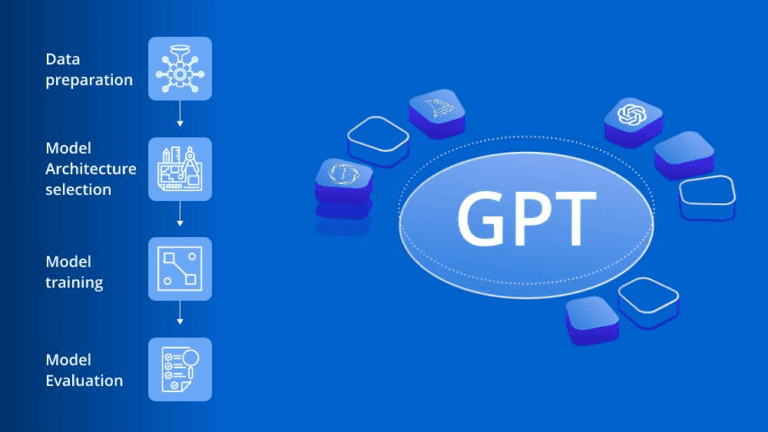I. Introduction
A. The Importance and Challenges of Amazon Product Selection
Amazon, as one of the largest e-commerce platforms globally, hosts millions of sellers and billions of products. For sellers, product selection is crucial—it directly influences their ability to stand out in a highly competitive market. However, selecting the right products is no easy task. Sellers must consider numerous factors, such as market demand, competition intensity, profit margins, and customer reviews. A wrong decision in product selection could lead to overstock, cash flow issues, or even business failure.
The complexity of the Amazon marketplace further exacerbates the challenges in product selection. With more sellers entering the platform, competition is fiercer than ever, and market dynamics constantly evolve. Traditional methods of product selection, such as relying on experience or intuition, are no longer sufficient. Sellers need more scientific and efficient tools and methods to ensure their products meet market demands and succeed in sales.
B. The Advantages of Data-Driven Decision-Making
In today’s era of big data, data-driven decision-making has become the mainstream in e-commerce. By analyzing large volumes of market data, sellers can better understand market trends, predict consumer needs, and formulate more accurate marketing strategies. Data-driven decisions significantly improve the success rate of product selection, reducing the risks associated with making uninformed choices.
Utilizing data from the Amazon site allows sellers to access a wide range of market information, such as product sales rankings, customer reviews, competitor pricing strategies, and more. This data provides a comprehensive market view, helping sellers accurately gauge market trends and make informed product selection decisions.
C. The Prospects of AI Technology in E-Commerce
As artificial intelligence (AI) technology rapidly advances, it has shown enormous potential in the e-commerce sector. AI can assist sellers in analyzing market data, predicting trends through deep learning algorithms, automatically recommending products, and even providing intelligent solutions in areas like customer service and logistics.
Particularly in product selection analysis, AI can deeply analyze historical data to identify potential bestsellers and predict their future market performance. This data-driven, intelligent analysis greatly enhances the accuracy and efficiency of product selection, giving sellers a competitive edge in the marketplace.
II. Amazon Data Scraping: Basics and Methods
A. Types and Value of Amazon Data
To understand how to effectively conduct product selection on Amazon, it’s essential to know what types of data are available on the site and how valuable this data is to sellers.
- Product Details Data: Includes basic information such as product titles, descriptions, images, and categories. This data helps sellers understand the basic attributes of products and compare them with similar products in the market.
- Sales Rank Data: Amazon assigns a sales rank to each product based on its sales performance. This rank is a critical indicator of a product’s market standing and can help sellers gauge its popularity and competitiveness.
- Customer Reviews Data: Consists of product ratings and review content provided by customers. These data points reflect consumer feedback on products, serving as a vital reference for sellers to understand product quality and customer needs.
- Pricing Data: Includes product prices, discount information, and historical price trends. Pricing is a key factor influencing purchasing decisions, and by analyzing this data, sellers can develop competitive pricing strategies.
- Inventory and Supplier Data: Reflects product stock levels and supply chain information. By analyzing this data, sellers can better manage inventory, avoiding stockouts or overstock issues.
These data types form a comprehensive framework for market analysis, enabling sellers to make scientifically informed product selection decisions in a complex marketplace.
B. Primary Sources of Data Scraping
When acquiring Amazon data, sellers can rely on various data sources, including public data, third-party tools, and self-developed data scraping methods. Each method has its advantages and limitations.
- Public Data
Amazon offers some public API interfaces that developers can use to access product information, sales data, and more. The data from these APIs is typically real-time and adheres to Amazon’s usage terms. However, public data is often limited in scope and depth, usually only satisfying basic data needs. - Third-Party Tools
Many companies develop specialized tools for scraping and analyzing Amazon data. These tools are typically powerful, easy to use, and can help sellers quickly acquire large amounts of data. However, these tools are often expensive, and some data may not be accurate or timely. - Self-Developed Data Scraping
Self-developed data scraping refers to sellers creating their own programs or using specific tools to extract the data they need from the Amazon website. This method offers high flexibility, allowing sellers to customize the scraping content according to their needs. However, self-developed data scraping also presents challenges, such as high technical barriers and dealing with anti-scraping mechanisms.
C. Advantages and Challenges of Self-Developed Data Scraping
Self-developed data scraping offers significant advantages in terms of flexibility and control. Sellers can choose specific data types and scraping frequencies based on their own needs and even customize how the data is processed. Additionally, self-developed scraping can save costs, especially when there is a need for long-term, high-frequency data acquisition.
However, there are also numerous challenges associated with self-developed data scraping. The first challenge is the technical barrier—developing and maintaining an efficient data scraping system requires a good grasp of programming and networking technologies. The second challenge is data updating and maintenance—data scraping is an ongoing task, and the data needs to be regularly updated to remain relevant. Lastly, there is the challenge of dealing with anti-scraping mechanisms—platforms like Amazon often implement anti-scraping measures to limit or prevent unauthorized data scraping. Sellers need to find ways to address these technical challenges while ensuring they comply with legal and regulatory requirements.
III. Data API: A Highly Efficient Solution for Amazon Data Scraping
A. Overview of Data API
Pangolin Data Service’s Data API is a powerful tool designed specifically for efficiently scraping various types of Amazon data. Compared to traditional data scraping methods, the Data API offers higher real-time data access, accuracy, and comprehensiveness, meeting sellers’ diverse data acquisition needs.
The core functionalities of the Data API include real-time access to product details, sales rankings, customer reviews, price fluctuations, and more. Additionally, the API is designed with a strong emphasis on compliance, ensuring that the data scraping process adheres to Amazon’s terms of service and relevant legal regulations, helping sellers avoid potential legal risks.
B. Advantages of Using the Data API
- Real-Time Data Access
One of the significant advantages of the Data API is its real-time access to data. Sellers can retrieve up-to-date market data at any time, such as price changes and inventory levels. This is crucial for sellers who rely on timely information to make quick decisions. Real-time data enables sellers to adjust their strategies more flexibly and respond to market changes promptly. - Accuracy
The Data API ensures that the data provided is accurate and complete, which means that sellers can rely on this data to make fact-based decisions without worrying about distorted or misleading information. - Comprehensiveness
The Data API covers a wide range of data types from the Amazon site, from basic product information to complex customer review data. This comprehensiveness allows sellers to analyze the market from multiple dimensions, forming a holistic understanding of market conditions. - Compliance
Compliance in the data scraping process is a significant concern for many sellers. The Data API is designed to strictly adhere to Amazon’s terms of service, ensuring that the data scraping process is both legal and compliant, thus avoiding account bans or legal disputes resulting from non-compliant actions.
C. Practical Example of Using the Data API
Here is an example of how to use the Data API to scrape Amazon data:
import requests
# Define API endpoint and request headers
api_url = "https://api.pangolindataservice.com/amazon/data"
headers = {
"Authorization": "Bearer your_api_token",
"Content-Type": "application/json"
}
# Define the data parameters to be scraped
params = {
"product_id": "B08K2S1NDX",
"data_type": ["price", "reviews", "sales_rank"]
}
# Send request and receive response
response = requests.get(api_url, headers=headers, params=params)
# Parse response data
if response.status_code == 200:
data = response.json()
print("Product Price:", data["price"])
print("Sales Rank:", data["sales_rank"])
print("Number of Reviews:", data["reviews_count"])
else:
print("Failed to retrieve data. Status Code:", response.status_code)D. Code Example Explanation
- Code Structure Explanation
The above code first defines the API endpoint (api_url) and request headers (headers), then sets the data parameters to be scraped (params), such as product ID and data types. Finally, the code sends a request using therequests.getmethod and parses the response data. - Key Parameter Explanation
product_id: This is the unique identifier of the Amazon product for which data is being retrieved.data_type: Used to specify the types of data to be scraped, such as price, review count, and sales rank.
- Error Handling and Optimization Suggestions
In practice, you may encounter network errors or API response failures. Therefore, it is recommended to include more comprehensive error-handling mechanisms in your code, such as retry logic and exception handling. Additionally, to improve data scraping efficiency, consider using multithreading or asynchronous requests, especially when you need to scrape large volumes of data.
E. Challenges
of Writing Custom Data Scraping Code
While it’s possible to develop your own scraping code, this process is not without its challenges.
- Technical Barriers
Writing data scraping code requires knowledge of programming and network request basics. This can be a significant obstacle for sellers without programming experience. Moreover, maintaining and updating scraping code also demands continuous technical investment. - Data Updating and Maintenance
The timeliness and accuracy of data require that the code runs regularly and processes the latest data. This means setting up automated tasks and handling failures caused by network fluctuations or changes in the target site. - Dealing with Anti-Scraping Mechanisms
Platforms like Amazon typically employ anti-scraping measures to prevent unauthorized data scraping, such as captchas and IP bans. This makes the process of writing custom scraping code more complex and requires sellers to find appropriate strategies to address these challenges legally and effectively.
F. Why Data API is a Superior Choice
Compared to developing your own scraping code, using Pangolin Data Service’s Data API offers clear advantages. First, the API provides a ready-made solution, saving sellers the time and costs associated with development and maintenance. Second, the API ensures real-time data access, accuracy, and compliance, avoiding issues related to technical inadequacies or legal risks. Finally, the API’s ease of use allows sellers to focus more on business expansion and market analysis rather than the tedious work of data scraping.
IV. AI-Driven Amazon Product Analysis
A. Feeding Scraped Data into AI Models
Feeding data scraped from the Data API into AI models is a critical step in achieving precise product selection. In this process, data cleaning, preprocessing, and formatting are all essential.
- Data Cleaning and Preprocessing
Data cleaning refers to the process of removing or correcting errors, incomplete information, or inconsistencies in the data to ensure its quality. During data scraping, issues like missing values, duplicate entries, or outliers may arise. If not addressed, these issues can lead to inaccurate AI model results. Therefore, data cleaning is a crucial part of data preprocessing. Common data cleaning methods include:
- Removing or filling in missing values
- Correcting erroneous data
- Eliminating duplicate entries
- Handling outliers (e.g., extreme values in pricing data)
- Data Formatting Requirements
Different AI tools or models have specific requirements for input data formats. For example, some models may require numerical data standardization (e.g., normalization) to ensure consistent scales during training. Additionally, for text data, preprocessing steps such as tokenization and stopword removal may be necessary to suit the needs of NLP (Natural Language Processing) models. During formatting, it’s also necessary to organize data according to the model’s input requirements, such as converting it into specific JSON or CSV formats for further processing by the model.
B. Overview of Common AI Tools
- ChatGPT
ChatGPT is a natural language processing model based on GPT (Generative Pre-trained Transformer) that can generate and understand natural language text. In Amazon product selection analysis, ChatGPT can be used to process and analyze customer review data, helping sellers identify the strengths and weaknesses of products and predict their market performance. For example, ChatGPT can summarize key product features based on customer reviews, automatically generate review summaries, and even simulate potential customer needs and concerns about a product. This analytical capability helps sellers better understand customer feedback, thereby optimizing product selection and marketing strategies. - Other AI Analysis Tools
Besides ChatGPT, many other AI tools can be applied in product selection analysis. For example, TensorFlow is a widely used deep learning framework suitable for building complex predictive models. With TensorFlow, sellers can train models based on historical sales data to forecast future sales trends and market demand. Moreover, tools like PyTorch are particularly well-suited for image data analysis. If sellers want to analyze product images to evaluate product quality or identify counterfeit products, PyTorch offers powerful image recognition capabilities.
C. Core Metrics for AI-Driven Product Selection Analysis
When using AI for product selection analysis, there are several key metrics to pay close attention to:
- Sales Trends
Sales trends are a core metric for assessing a product’s market potential. By analyzing historical sales data, AI models can identify cyclical changes and long-term trends in sales, thus predicting future sales performance. This is crucial for planning product inventory and setting promotional strategies. - Competition Intensity
Competition intensity measures the number of similar products in the market and their sales performance. AI can help sellers assess a product’s competitiveness by analyzing competitors’ sales, customer reviews, and pricing strategies. This helps sellers avoid entering overly saturated markets while discovering underdeveloped market opportunities. - Profit Margins
Profit margin refers to the profit generated after deducting costs from sales revenue. AI can calculate a product’s potential profit margin by analyzing its cost structure, market pricing, and sales forecasts. This metric is critical for sellers when setting pricing strategies and evaluating the return on investment. - Seasonal Factors
Seasonal factors refer to how much a product’s sales are influenced by seasonal changes. AI can analyze historical data to uncover seasonal sales patterns, helping sellers optimize inventory management and marketing strategies. For example, certain products may see significant sales increases during holidays or specific seasons, and predicting these changes in advance can help sellers capitalize on sales peaks.
V. Practical Applications of AI-Driven Product Selection
A. Case Study: Success Story of AI-Driven Product Selection
To demonstrate the practical effects of AI-driven product selection, here’s a success story. A mid-sized e-commerce company successfully predicted and seized market opportunities by using Pangolin Data Service’s Data API and AI technology.
The company primarily sold kitchen products, but during a certain period, sales growth slowed, and inventory piled up. By analyzing market data, the company found that the kitchen products market was highly competitive, while consumer demand for new products was rising. They then used the Data API to scrape market data for hundreds of new products and fed this data into AI models for analysis.
The AI models not only helped them identify several high-potential new categories but also predicted the sales trends for these new products over the coming months. As a result, the company adjusted its product line, introduced the best-performing new products predicted by the AI, and incorporated AI-based pricing and promotional plans into their sales strategy. These new products quickly became bestsellers, helping the company overcome its sales bottleneck.
B. Detailed Steps: From Data Scraping to AI Analysis
- Data Scraping
Use Pangolin Data Service’s Data API to first scrape target market data. This includes product descriptions, prices, customer reviews, sales ranks, and more. - Data Cleaning and Preprocessing
The scraped data often contains noise and incomplete information, so it needs to undergo cleaning and preprocessing. Ensure all data is uniformly formatted, error-free, and remove irrelevant or duplicate data. - AI Model Training
Train AI models using the preprocessed data. Choose suitable algorithms and model architectures (e.g., random forests, neural networks), and tune hyperparameters according to data characteristics to achieve optimal model performance. - Product Selection Analysis
Use the trained AI model to conduct product selection analysis. The model will make predictions based on the input data and output product selection recommendations, including key metrics such as predicted sales, profit margins, and competition intensity. - Strategy Optimization
Optimize product strategies based on AI analysis results. This may include adjusting inventory, modifying pricing strategies, designing promotional activities, etc., to ensure that the final product selection strategy aligns with market demand and maximizes profit.
C. Common Pitfalls and Considerations
- Over-Reliance on AI Analysis
Although AI is powerful in data analysis, it cannot completely replace human judgment. AI’s predictions are based on historical data and cannot perfectly predict future market changes. Therefore, when making decisions, sellers should combine their experience and market intuition with AI’s recommendations, rather than relying solely on AI. - Ignoring Data Quality
Data quality directly impacts the accuracy of AI analysis. If the input data contains a lot of noise or errors, AI’s analysis results may deviate from reality. Therefore, before using AI tools, it is essential to ensure the accuracy and completeness of the data. - Failing to Consider Market Disruptions
Sometimes, market changes are sudden and unpredictable, such as new regulations or unforeseen events. These changes may render AI models’ predictions invalid. Therefore, sellers should remain sensitive to the market and adjust strategies in a timely manner.
VI. Optimizing AI-Driven Product Selection Strategies
A. The Importance of Continuous Data Updates
Continuously updating data is key to optimizing AI-driven product selection strategies. In the e-commerce sector, the market environment changes rapidly, with products’ sales, customer reviews, and competitive situations constantly evolving. If data is not updated in a timely manner, AI models’ predictions may become inaccurate, negatively impacting the accuracy of product selection decisions.
Sellers can use the Data API to access real-time market data regularly, update AI models periodically, and ensure that models always base their analyses on the latest market information. This not only improves the precision of product selection strategies but also helps sellers respond more quickly to market changes.
B. Combining AI with Human Judgment
Although AI excels at processing and analyzing large amounts of data, human judgment is still necessary in certain situations. For example, when there are sudden market changes or when certain product characteristics cannot be quantified by data, sellers’ experience and intuition remain indispensable decision-making tools.
Therefore, one crucial aspect of optimizing product selection strategies is to combine AI analysis results with sellers’ actual experience. By doing so, sellers can maintain the scientific nature of their decisions while ensuring flexibility and adaptability in their strategies.
#
C. Cross-Platform Data Integration and Analysis
Amazon is not the only e-commerce platform; many sellers also operate on other platforms such as eBay, Walmart, and others. Integrating data from multiple platforms for analysis can provide sellers with a more comprehensive view of the market.
By using Pangolin Data Service’s Data API and other cross-platform data scraping tools, sellers can consolidate data from different platforms and conduct unified analysis. This cross-platform integration can help sellers identify differences and similarities across various markets, allowing them to develop more effective global product selection strategies.
VII. Future Outlook
A. Trends in Amazon Data Scraping Technology
In the future, Amazon data scraping technology will become more intelligent and automated. As AI and machine learning technology advance, data scraping tools will be able to identify and extract key information more precisely and automatically handle anti-scraping mechanisms. Additionally, the compliance of data scraping will improve further, addressing increasingly stringent privacy and data protection regulations.
B. Broader Applications of AI in E-Commerce
AI technology will find broader applications in other areas of e-commerce, such as intelligent customer service, personalized recommendations, inventory management, and more. As AI algorithms continue to improve, their application in product selection analysis will become even more in-depth, helping sellers make more forward-looking decisions.
C. Increasing Importance of Data-Driven Decision-Making
As market competition intensifies and consumer behavior becomes more complex, data-driven decision-making will become a core element of e-commerce operations. Sellers will increasingly rely on data and AI tools to guide their business development, helping them maintain a competitive edge in a fiercely competitive market.
VIII. Conclusion
A. Summary of the Advantages of AI-Driven Amazon Product Selection
By leveraging Pangolin Data Service’s Data API and AI technology, sellers can achieve efficient and precise Amazon product selection. AI-driven product selection strategies not only enhance the accuracy of product selection but also help sellers better understand market dynamics and optimize business decisions.
B. Encouraging Readers to Explore Data Scraping and AI Analysis
For sellers aiming to succeed in the Amazon marketplace, data scraping and AI analysis tools are indispensable assets. Whether you are a new seller or an experienced e-commerce operator, you should explore using these tools to improve your product selection efficiency and gain a competitive advantage.
C. Highlighting the Value of Pangolin Data Service in This Process
Pangolin Data Service provides comprehensive, efficient Data APIs and data scraping tools that offer robust technical support for sellers in the competitive Amazon marketplace. These tools enable sellers to easily access market data and combine it with AI analysis to implement more scientific product selection strategies, driving business growth.







